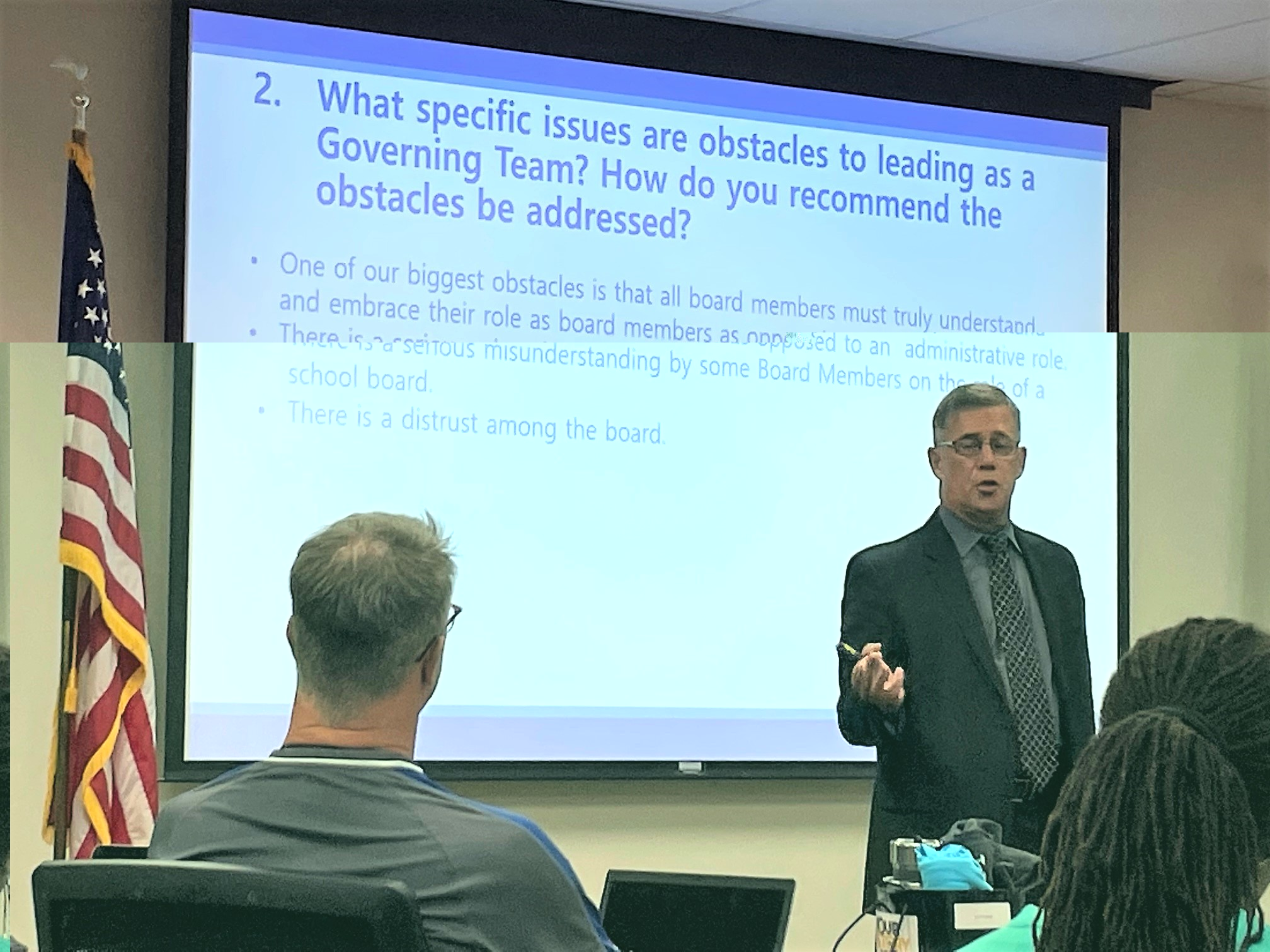The superintendent of Springfield Public Schools is entering her second year on the job, and only one member of the current seven-member board helped craft the district’s current strategic plan. Together, the superintendent and the board on Tuesday began the process of creating a new strategic plan for the district. And they essentially have a deadline of mid-December to get it done.
That’s when the district must file a comprehensive plan with the state Department of Elementary and Secondary Education. If the district did not submit its Missouri School Improvement Plan, it would risk losing state accreditation. Superintendent Grenita Lathan said the plan owed to the state doubles as the strategic plan for many districts across the state, making this the right time to reexamine and redraft Springfield’s strategic plan.
“The great thing about you all as board members is everyone is coming to the table with an open mind, we all agree we want to improve outcomes for students that we've been called to serve,” Lathan said. “And we can do that through our strategic plan.”
A strategic plan serves as the mission statement or vision for the school district after the board approves it. The current SPS plan was the result of a year-long priority evaluation process that began in 2015 and has twice been revised to add more focus areas. In each of those areas, the district seeks to measure improvement over time.
The SPS plan currently includes five focus areas:
- Student success and learning support.
- Empowered and effective teachers, leaders and support personnel.
- Financial sustainability and operational efficiency.
- Communication and engagement.
- Equity and diversity.
Communication and engagement, and equity and diversity, were added to the strategic plan after the original three points were drafted.
Board priorities, strengths, issues on display during discussion

At Tuesday’s school board retreat, the process of creating a new strategic plan, as well as the steps needed to bring the new board members together to do their part, were central topics. The next plan’s focus areas weren’t the main subject of Tuesday’s meeting, but there were signs of some board member priorities on slides that showed their anonymous responses to a consultant’s survey questions about goals, working relationships and other issues.
“Our current document is outdated, has no focus on learning and student achievement, is not measurable, and focuses on just about everything else other than education and student achievement,” one board member wrote in response to a question about obstacles to operating as a governing team. Another board member answered the same question by saying that some board members are micromanaging the day-to-day operations of the district staff.
Both newly elected board members Kelly Byrne and Steve Makoski campaigned in part on a promise of centering the district’s priorities around student achievement. Six of the seven board members responded to the survey, said Jim Hinson with EGL Association, which specializes in advising and training Missouri school boards and superintendents.
In his presentation, he said great boards build great working relationships with one another and their superintendent. They eliminate gray areas, develop effective communication channels, gather information in a timely fashion and develop a process for navigating conflicts among members, among other traits. Conflict, he said, is common. Different viewpoints are fine, he said, as long as there are shared goals. One board member’s response to a question about factors that impact communication with other members touched on both of the points.
“Political partisanship entered the election this past year,” one member wrote. “This continued after the election and in the Board room. Being bipartisan will help promote open communication as will working to present a united front to the community. We may disagree in order to solve problems, but we all have the same goal — student success.”
Hinson will continue to consult Lathan and the SPS board through the fall, and EGL Association will conduct a series of surveys and interviews to gather answers from a wide array of stakeholders — teachers, students, staff, parents and others — to look for key themes that community members consider to be their priorities for the school district. The surveys, which were commissioned to assist in the development of the strategic plan, will also serve as data for the comprehensive plan that the district owes the state in December when the Missouri School Improvement Plan must be submitted.
It’s a quick timeline compared to other boards that have embarked on forming new strategic plans in other districts, board vice president Maryam Mohammadkhani said. She said she had heard that the process has taken other districts between six months and two years to complete, “so this is an ambitious plan, but we’re going to work hard.”
President Denise Fredrick, who was the sole board member to participate in the last strategic plan development process, said that there are a number of members on the board who have been discussing changes to the plan for some time. The report due to the state in December sets a deadline, she said, but this board didn’t need one to get moving.
“We’re putting on the pressure internally as well,” she said.

